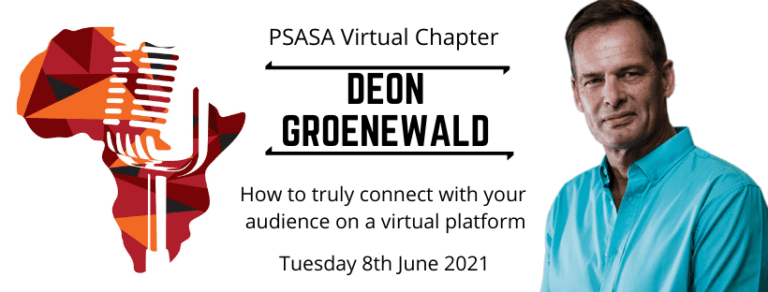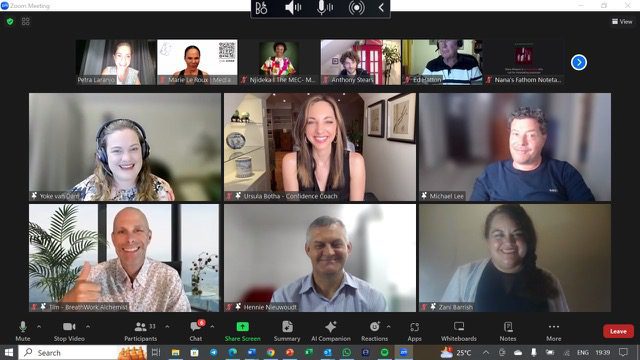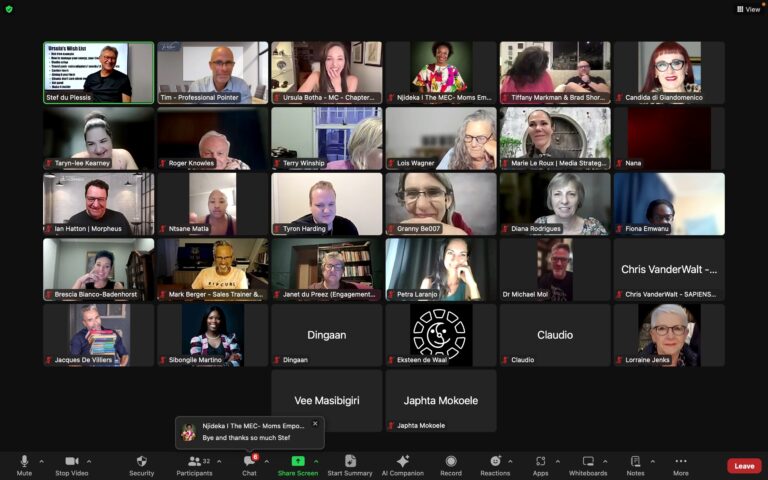The professionalism of Deon Groenewald came through in many ways during the PSASA session. He demonstrated what he was talking about namely, “how to connect with your audience on a virtual platform”.
Virtual speaking asks the same professional approach as with face-to-face speaking engagements. There is just a shift in things we should look at. Instead of the physical presence issues (aftershave), performance on stage with gestures or how to handle the mic, the shift is now more focused on content. The implication is less space to those charismatic characters who just know how to manipulate people with ‘artificial’ stuff.
The challenge is still to capture the attention of the audience and for cameras to stay on, add the dimension of visual contact. The temptation of distractions can be overwhelming with no observation, which by the way is a well-known principle from Astrophysics, with other words, a law of nature.
Your authenticity cannot be over-emphasized. Do whatever you have to do to manage your personal space to ensure authenticity. Most important is to be calm and in control all the time and the flexibility to go with the flow, as many things can interrupt or disturb your time as speaker.
If you struggle with talking to audiences who you cannot see , due to cameras being off, place a teddy behind your camera or a picture of audience to talk to. Authenticity will also reflect in your attitude as this should speak of respect and appreciation for the audience as people with the same emotional needs as before.
Spatial issues should be analyzed strategically, with much to learn from experts in terms of lighting, background and décor. Bodily communication should be emphasized. Standing upright while speaking, instead of sitting down, can be a small thing for some but my gut tells me this is more important than realized before.
Feedback about your habit with timing and duration of pauses, should be from external sources. As well as your ability to address the internal experience of the audience, to facilitate their participation and the level of ownership of what you shared.
Always remember for some, this may be all they get.







